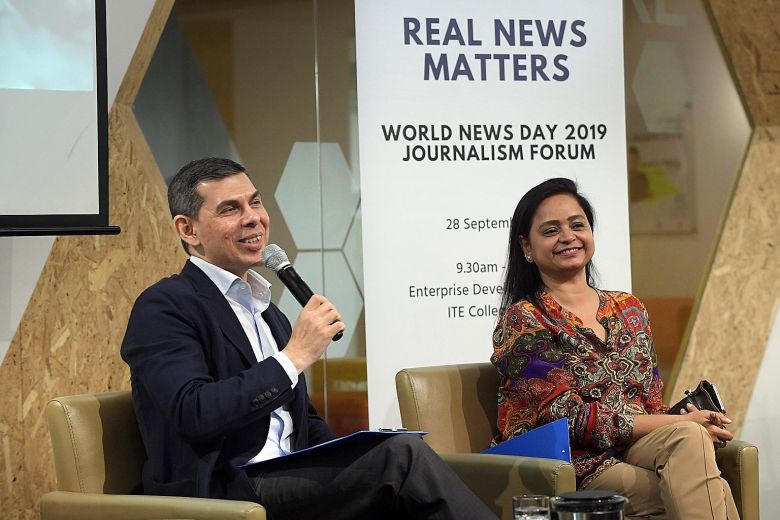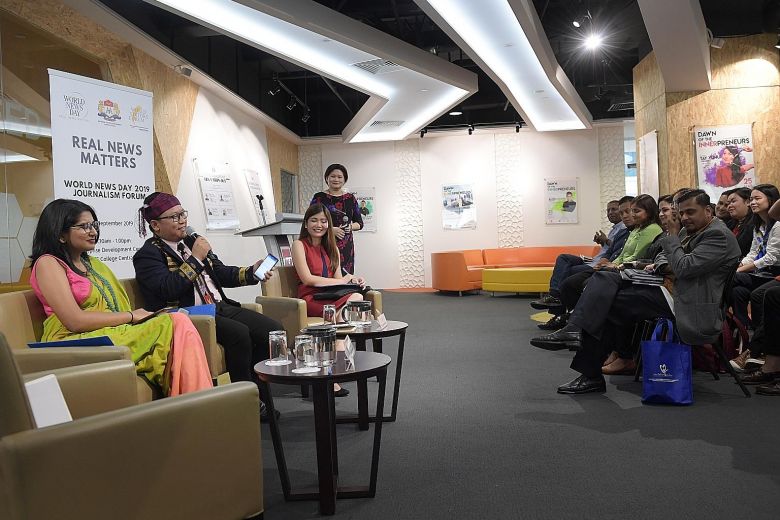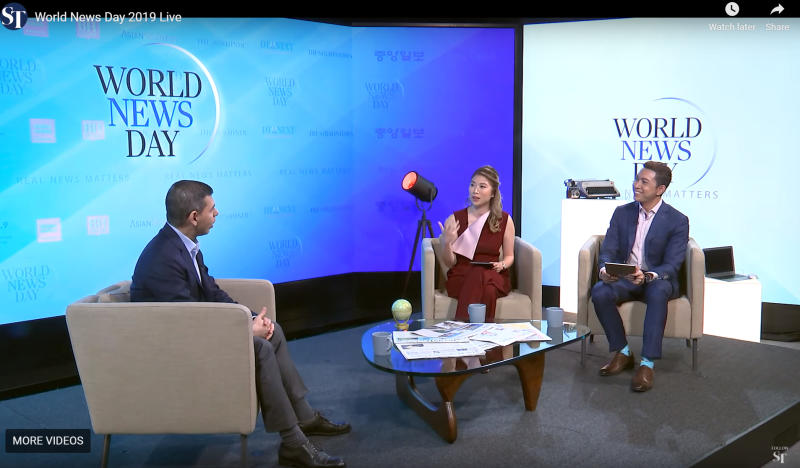In an increasingly complex world with misinformation on the rise, journalists play a crucial role in providing reliable information to support reasoned debate.
That is why the work that professional newsrooms do, in fact-checking and ensuring a balanced, objective and unvarnished account of events, is so important, said Mr Warren Fernandez, editor of The Straits Times, on Sept 28.
“While the world is more connected today and more people have much more information available at their fingertips, the irony is that societies are not necessarily better informed or equipped to make the difficult choices we need to if we are going to address the many challenges we face,” he said in opening remarks at the Real News Matters journalism forum, which marked World News Day with a series of discussions.
World News Day celebrates the work of professional news organisations and their impact and aims to raise public awareness of the role that journalists play in providing credible and reliable news and views.
Mr Fernandez said that sensible, democratic discussions cannot happen in the absence of credible and reliable information.
“Instead, discussions turn into shouting matches, which tend to be dominated by those with the loudest, most nasty or persistent – or often, the best financed – voices,” said Mr Fernandez, who is also editor-in-chief of Singapore Press Holdings’ English, Malay and Tamil Media Group, and president of the World Editors Forum, the network for editors within the World Association of Newspapers and News Publishers (Wan-Ifra).
“Each one of us ends up the loser – it is your views, your society, your future that is degraded in the process.”
He also warned of the rise of fake news, with dubious content spreading over phones and social media.
ST’s Asia News Network editor Shefali Rekhi led an educational session on fighting fake news, which included practical tips on how to spot tell-tale signs of misinformation.
The audience participated actively in asking questions, which ranged from how to deal with the speed at which fake news spreads, to how askST, part of the publication’s efforts to fight fake news, deals with the volume of requests.
The forum was held at the Institute of Technical Education (ITE) College Central and jointly organised by Wan-Ifra and the National Youth Achievement Award Council.
The event, which saw around 100 attendees, including students, journalists and members of the public, also featured two panels on the impact of journalism.
One of them was titled It Changed My Life, named after an award-winning series by ST senior writer Wong Kim Hoh, who was one of the panellists.
The other panellists were Dr Mustafa Izzuddin, a research fellow at the National University of Singapore’s Institute of South Asian Studies, who talked about the relationship between academics and the media; and ITE College Central student Javier Ng, who shared how the media helped in his anti-drug advocacy.
The panel was moderated by Ms Alysha Chandra, editor-in-chief of The Octant, a Yale-NUS College student publication.
The other panel was made up of participants from the Asia Journalism Fellowship, who spoke about covering conflict.
Ms Kalani Kumarasinghe, features editor at Sri Lanka’s The Daily Mirror, shared about the chaos caused by the bomb attacks that left more than 250 dead on Easter Sunday, shattering a decade of relative peace.
“Imagine this. You are trying to interpret the bomb scare, and then there are fake news tweets coming up about bombs (going off)… Even within our newsroom we were panicking because we saw a tweet saying there was a bomb right across our office,” she said.
With her were Mr Maran Htoi Aung, editor of Myanmar’s Kachin Waves, who spoke about the difficulty of gathering information and providing a balanced account on the conflict in his home state of Kachin; and Ms Victoria Tulad, senior news correspondent at GMA Network, who spoke about her work in covering Philippine President Rodrigo Duterte’s war on drugs.
Said Ms Tulad: “It is a privilege to witness history, but it is also our responsibility to make sure it is not forgotten.”
Mr Koh Jun Jie, 18, said he learnt a lot from the forum and was inspired by some of the stories.
“I have a better knowledge of world events and what being a journalist involves,” said the Year 2 ITE College East student.



